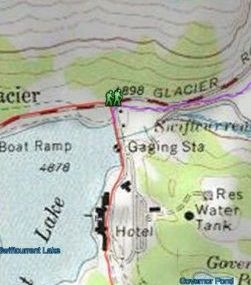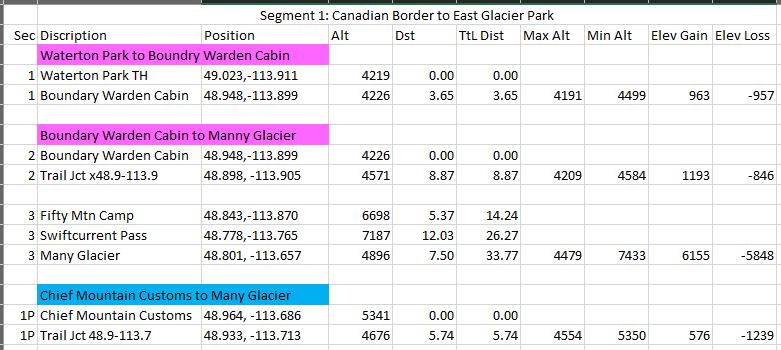The Continental Divide National Scenic Trail
The Continental Divide Trail covers 3,100 miles along the Rocky Mountains, extending from the Montana/Canadian border to the New Mexico/Mexican border. This guide will assist in planning a hike along the trail.
The following text provides a planning guide for the Continental Divide Trail (CDT). It is not a detailed, step-by-step account of the trail or a description of every hill and switchback. For such information, there are numerous guidebooks available. This guide is meant for those planning a thru-hike or segment hiking and has been developed using information from various guidebooks.
The Montana-Idaho section of the CDT starts at the Canadian border and goes south through Glacier National Park along the Livingston Range. It passes through Flathead National Forest, Lewis and Clark National Forest, and The Bob Marshall-Scapegoat Wilderness Complex while crossing the Continental Divide multiple times. Then it continues south through Helena National Forest.
While in Deerlodge National Forest, the divide trail continues south through the Highland Mountains then turns westward along the Anaconda Range into Beaverhead National Forest, and the Anaconda–Pinter Wilderness. Near the Montana – Idaho border the trail turns back towards the south and follows the Beaverhead Range through Beaverhead and Salmon National Forests. At the south end of this range, the trail continues eastward through the Targhee National Forest and this segment ends at Macks Inn, Idaho.
The CDT
The Continental Divide Trail (CDT) consists of a network of multiple routes rather than a single path. Much of the trail remains unmarked or lacks a defined path. Hikers often say they rarely follow the exact same route unless they travel together. Sometimes, the Designated  Route isn’t the most appealing option, leaving the choice up to each individual. Maps highlight the Designated Route in magenta, while they mark the Alternate Route in yellow. When the Alternate Route becomes the preferred path, maps indicate it in blue. Hikers may also need to detour to a town for supplies, with these Trails to Towns (T2T) marked in green.
Route isn’t the most appealing option, leaving the choice up to each individual. Maps highlight the Designated Route in magenta, while they mark the Alternate Route in yellow. When the Alternate Route becomes the preferred path, maps indicate it in blue. Hikers may also need to detour to a town for supplies, with these Trails to Towns (T2T) marked in green.
Remember these details: The map highlights the Continental Divide Trail with color-coded sections. Click on the highlighted trail to display its label. These labels correspond to “Route Highlights” as well as “Waypoints, Mileage, and Elevation Gain & Loss.”
Route Highlights
The “Route Highlights” present the sections of the route in a north-to-south sequence. The labels correspond to those on the maps, and the color coding is consistent. The designated trail is listed first, followed by any preferred or alternative routes.
Waypoints, Mileage, and Elevation Gain & Loss
The table titled “Waypoints, Mileage, and Elevation Gain & Loss” organizes all routes in a north-to-south sequence, aligning with the Route Highlights. Section numbers (Sec) are assigned sequentially from north to south. Designated trails are marked with whole numbers, ‘P’ denotes the preferred trail and alternate routes are indicated by a number followed by ‘A’. The designated trail is always listed first, followed by other trails. Each waypoint includes a name, latitude, and longitude, using the WGS 84 datum, and the table also shows its altitude. The ‘Dst’ column displays the distance between waypoints, while ‘TtL Dist’ represents the cumulative distance for each section. The subsequent two columns present the maximum and minimum altitudes along the route, as well as the total altitude gained and lost..

As this is just a planning guide the need for waypoints will vary in distance and are there mainly to help identify the route.
CDT Segment Links
Montana/Idaho
| Border to East Glacier Park Segment 01 | East Glacier Park to Benchmark Segment 02 |
| Benchmark to Rogers Pass Segment 03 | Rogers Pass to MacDonald Pass Segment 04 |
| MacDonald Pass to Homestake Segment 05 | Homestake to Lost Trail Pass Segment 06 |
| Lost Trail Pass to Bannock Pass Segment 07 | Bannock Pass to Bannack Pass Segment 08 |
| Bannack Pass to Macks Inn Segment 09 |